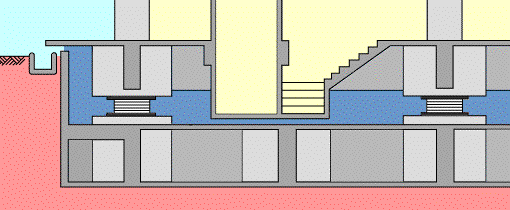SEISMIC ISOLATOR SYSTEM
The basal seismic isolation limits energy transfer from the soil to the structure in case of an earthquake or smaller vibrations.
The principle of seismic isolation is to decouple the structure of terrain movements caused by earthquakes that could cause damage to the supporting structure. This is achieved using a series of antiseismic devices called insulators, which are strategically placed on the foundation or any other part of the structure allowing them to act properly during an earthquake.
Seismic insulators provide sufficient flexibility to the structure to ensure that the natural period of this differs from the natural period of the earthquake to the greatest extent possible. This prevents the occurrence of the resonance phenomenon, which could cause severe damage and even the collapse of the structure.


Behavioral Graph of a seismic isolation system
Seismic isolation advantages:
-Optimum Performance under service charges, vertical loads and horizontal loads, being as effective as conventional structural support.
-Provide sufficient horizontal flexibility to achieve the desired natural period for the insulated structure.
-Recentering capacity during the seismic phenomenon so that no residual displacement can alter the structure service capacity.
-Provide optimum levels of energy dissipation to control the displacements that could damage other structural elements.









